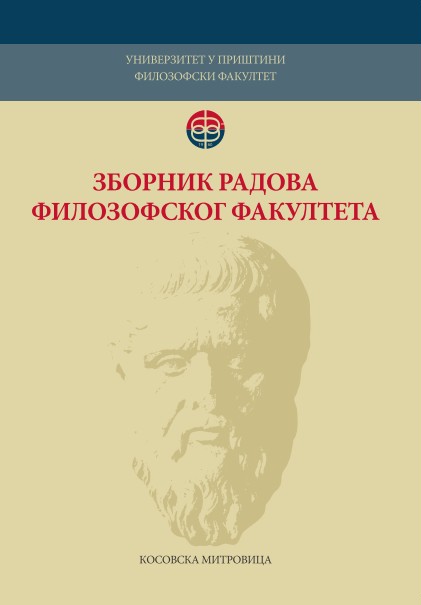Аутопоетичко вајање Стевана Раичковића – песничка самосвест у циклусу Разговор са иловачом и песми „Из мрака те, песмо, зовем, из ничега“
Autopoetic Sculpting of Stevan Raičković – Poetic Self-Consciousness in the Poem Cycle Razgovor sa ilovačom and the Poem Iz mraka te, pesmo, zovem, iz ničega
Author(s): Jelena I. MarinkovSubject(s): Language and Literature Studies, Studies of Literature
Published by: Филозофски факултет, Универзитет у Приштини
Keywords: Stevan Raičković; Razgovor sa ilovačom; Iz mraka te pesmo zovem iz ničega; loam motif; poetic self-consciousness; autopoiesis.
Summary/Abstract: In this paper, we have analyzed the manifestations of poetic self-consciousness in the poetry of Stevan Raičković in the poem cycle Razgovor sa ilovačom and in the poem from the poetry collection Verses, Iz mraka te, pesmo, zovem, iz ničega. By semantically shaping the motif of the loam, the poetic complementarity between the poem and the cycle was established—the ideal of the poem as sculpture and the meta-lyrical reflection of the poet, evoked by observing the transformation of his own character into a bust. The poem Iz mraka te, pesmo, zovem, iz ničega evokes a symbolic attempt to sculpt the poem, based on visual imagination. Explicit autopoiesis is manifested in this poem—the poetic self-consciousness tries to view the poetic text as a matter that can be manually shaped, and in the end reaches a conclusion about the incompatibility of the means of expression and the assumed result. In the cycle Razgovor sa ilovačom, the means by which the poem is supposed to be materialized also appears to be incompatible with poetic contents, and lyrical subject expresses doubts about the constitutive power of language. The discrepancy between the stativity of the sculpture and the dynamism of the inner life, however, causes a return to words. Self-referentiality in the cycle Razgovor sa ilovačom indicates the implicit autopoiesis manifested in the treatment of the relationship between life and art and the problematization of equivalence between nature and poetry: because the poet tries to fix phenomena from life in the poem, just like the sculptor, he moves away from the dynamism of life. Interpreting the way in which the motif of the loam is shaped in relation to the theme of poetry, demonstrates the development of poetic self-awareness and doubts about the possibility of writing an authentic poem.
Journal: Зборник радова Филозофског факултета у Приштини
- Issue Year: 51/2021
- Issue No: 2
- Page Range: 37-54
- Page Count: 18
- Language: Serbian

